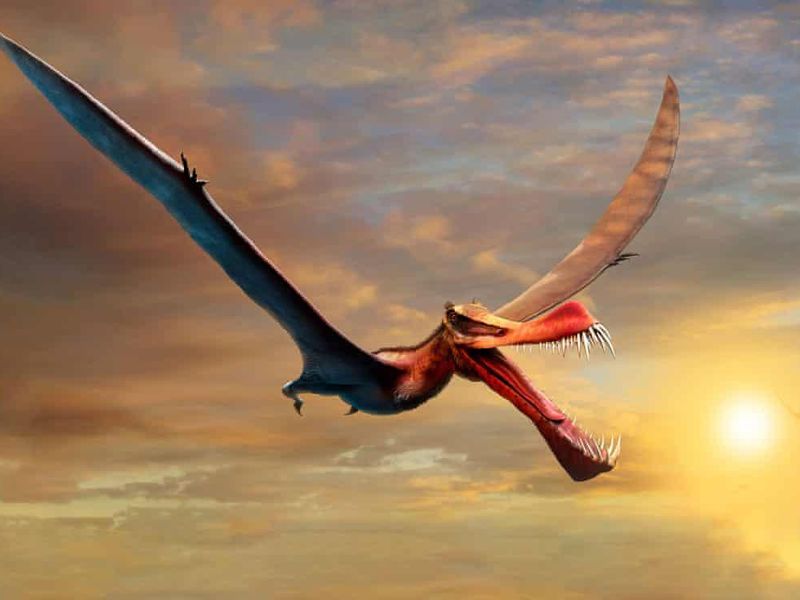It must have been a sight to behold in the ancient times, when a giant winged creature flew past in the Australian skies! Sounds unbelievable but it could be true.
According to a recent study published in the Journal of Vertebrate Palaeontology, around 105 million years in the past, a latest member of flying reptiles called pterosaurs, soared in the modern-day Australia skies. It had the distinction of being the continent’s largest-ever flying reptile.
Tim Richards, the co-author of the study and a Ph.D candidate in University of Queensland in a statement said: “It’s the closest thing we have to a real-life dragon.”
What really made these flying creatures fearsome was their wingspan which was the length of a school bus besides their three-foot-long skull with a pointed snout. It also had 40 sharp teeth.
Also read: With help from lion-hearted sailors stranded killer whale gets a new lease of life
This winged reptile most probably lived near Eromanga Inland Sea where it hunted fish. This Sea was a large inland one that was once present during the early Cretaceous period in eastern Australia.
In an article in smithsonianmag.com describing its appearance, Richards told the Guardian: “It wasn’t built to eat broccoli. It would have been a fearsome sight.”
The fossil remains of this ancient creature was discovered a decade ago in northwest Queensland but it was not until now that the scientists could prove it to be a new species. Pterosaur had more than 200 species and the range of their size was wide. They could be as big as the 16-foot-tall Quetzalcoatlus to as small as the sparrow-sized Anurognathus.
While pterosaurs shared the skies with feathered birds, unlike them they stayed aloft on membrane wings stretched between their fingers.
Also read: Lions of the Arctic — 27,000-year-old ice-age corpse of lion cub raises new questions
The team from the University of Queensland team who found this fossil was able to reason the creature’s size and its special attributes from its jaw. The new pterosaur was named by the team Thapunngaka shawi. The name incorporates words from the now-extinct language of the Wanamara Nation who are one of Australia’s Indigenous First Peoples groups.
Explaining the name to Science Alert, study author Steve Salisbury who is a palaeontologist at the University of Queensland, said: "The genus name, Thapunngaka, incorporates thapun [ta-boon] and ngaka [nga-ga], the Wanamara words for 'spear' and 'mouth', respectively.”
Not much is known about these ancient flying creatures. The reason being as they had fragile and lightweight bones, it is really difficult to find their fossils in Australia or for that matter anywhere else in the world. Thus their lives remain a mystery to us.
Richards told the Guardian: “Pterosaurs don’t preserve well. Most of these things likely fell into the sea on death and were gobbled up by predatory beasts in the sea. A lot of them would never have made it to the seafloor to start that fossilization process.”
A research team from the UK learned that baby pterosaurs could fly within hours or minutes of hatching from their gull-sized eggs.
Also read: Study reveals Polar bears could have used rocks and ice chunks to kill and eat Walruses
Pointing out an interesting aspect of the Thapunngaka shawi, Salisbury said is the evidence of matching boney crests on the reptile’s lower and upper jaw. “These crests probably played a role in the flight dynamics of these creatures, and hopefully future research will deliver more definitive answers.”
The pterosaurs have been an enigma for scientists as they were the first vertebrates to master flight, While some were found as recently as 66 million years ago, they go a long way to as far as 250 million years ago.
The present fossil discovered is the third species of anhanguerian pterosaur known to science. Intriguingly, all these species come from western Queensland.
















